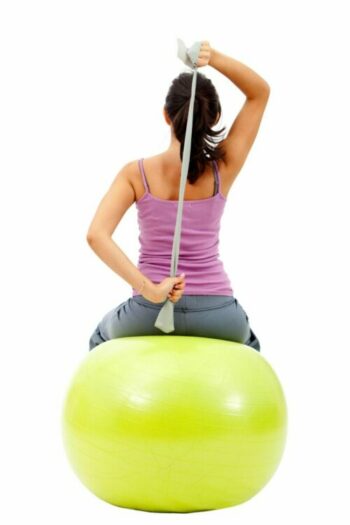
With colder weather and COVID-restrictions, we’re all sitting and staring at screens more. Increased inactivity makes having correct posture, both when sitting and standing, important now more than ever. Do you find yourself suffering from more back, shoulder, or neck pain? Maybe you’re experiencing feelings of overall “tightness”? Your posture may be the culprit.
Incorrect posture can be harmful to the structure of the body as a whole, reducing muscle functionality, tightening ligaments, and causing joint pain. A slouched, forward-head position can cause ligaments and muscles along the back of the body to strain from tension and become tight. Meanwhile, the ligaments and muscles along the front of the body can become slack, compressed, and weakened. Consistently poor posture can even cause bones to change shape and accelerate degenerative changes in the spine.
Poor posture makes it challenging to maintain good posture and causes our muscles, bones, and ligaments to work less effectively when we begin moving. This hinders our ability to exercise effectively, bear weight, gain muscle, and even breathe deeply. Slouched sitting and standing posture can also push the chest cavity inwards, leading to cardiovascular and circulatory problems over extended periods of time. Examples of habits that lead to bad posture include holding our heads forward with the neck protracted, hunching while sitting, taking infrequent breaks with our desk jobs (leading to a pelvis that is rotated backward), and standing with our bodyweight shifted over one leg.
When we have good posture, our muscles are able to minimize the force of gravity on the body, thereby reducing tension and compression, and work more efficiently together. Proper alignment is the foundation of good posture. From a front, full-body view, your ears, shoulders, and hips should all be even between the left and right sides. From a side, full-body view, the back of the ears, shoulder, hip, knee, and ankle joints should be aligned with each other. When sitting, the hips, shoulders, and ears should all be aligned—approximately perpendicular to the floor, with the knees bent to roughly 90 degrees.

You can check your posture yourself. When looking at full-body photos of yourself from a side view, you can ask yourself a series of questions:
When assessing your posture, there are many other points that need to be considered and it’s important to take a holistic approach to resolve imbalances in the body. For example, reconsider your desk setup or your posture when you look at your phone throughout the day. Good posture promotes more efficient body biomechanics, improved flexibility, and less overall strain on the body.
Sometimes working on your posture is something you can do on your own, but it often takes the skill and expertise of a holistic manual physical therapist to help you determine a treatment plan. Everyone can re-train their body to prevent posture-related pain and injuries, and this where a Rebalance physical therapist can help! Your therapist will evaluate your posture and use a hands-on approach to help you perfect your posture through manual therapy techniques, stretches, and strengthening exercises. Poor posture can develop over time due to subconscious habits, but we can all make a conscious effort to correct it to achieve a healthier, more balanced body.
In-Person and Online Consultations


